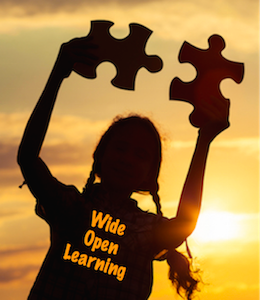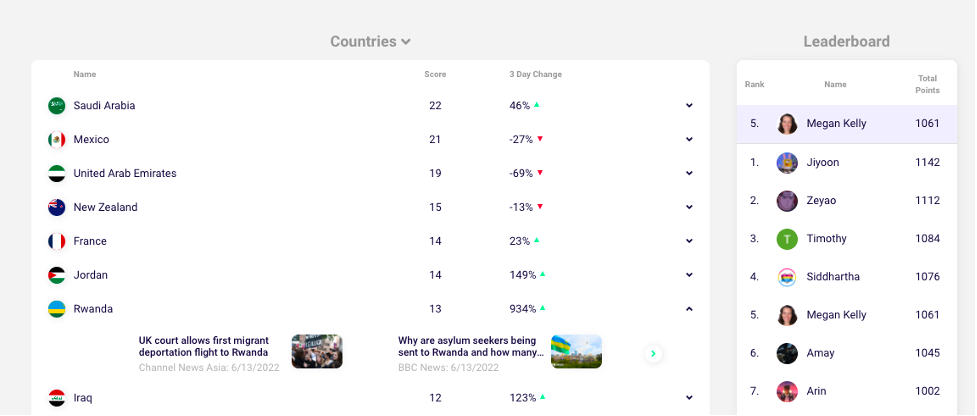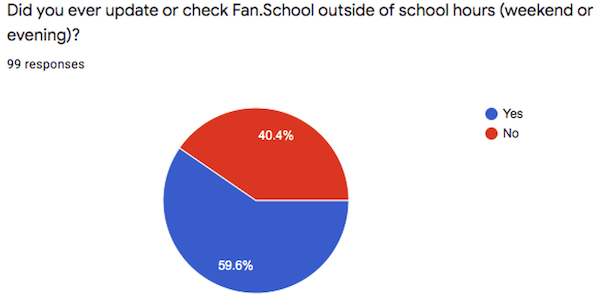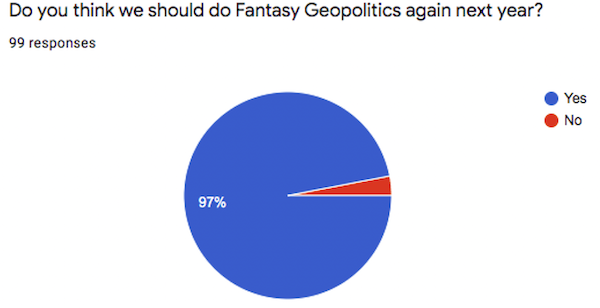Enliven Current Events with Fantasy Geopolitics
A MiddleWeb Blog

This is what I envisioned fantasy geopolitics to be, so much so that I have been adding it regularly to my “try this next year” list at the end of each school year. Somehow, it always felt too daunting to me. I am so grateful that I’ve finally made it work.
Fantasy geopolitics is based on the pastime of creating a “draft” of favorite football players from a variety of teams and awarding points to your fantasy team, based on how the players do in real life games.
While this is a popular activity in the United States, only a few of the students at my Singapore international school had heard of it before. When I told them that they would be drafting different nations instead of athletes, they were immediately excited by this new approach to current events.

My department agreed to pay the $99 for a year-long subscription to Fan.School, a company designed specifically for fantasy geopolitics. It didn’t take long for me to set up my five classes and the game for each class.
In our initial class last year, students drafted different countries to their roster, making choices based on how much each country “cost.” While we were playing, Ukraine was the country that cost the most points (being in the news is a key scoring attribute). If students drafted it, they would have very few points for any other countries. So what were other options? The class buzzed with different strategies and ideas.
Some students hopped on the New York Times website to see what countries were in the headlines. Others decided to draft their home nations, even if they weren’t in the news. Students wondered why Sweden and Finland were ranked so highly, which led to spontaneous research on NATO and why they would want to join.
While initially disappointed that our school’s country of Singapore was not highly ranked, students soon realized it was a good thing that there wasn’t much news about our host country.
The Fan.School website ranks the country by the percentage they were in the news for the past three days. It was easy to sort the country page by percentages and make choices based on this information. Best of all, a small carat (v) on the page provides a drop-down with two recent headlines about the country.
The rankings updated once a day, and the students were eager to see how their previous choices paid off. A few students noted that it was like the stock market, but for countries.

What our class time looked like
Once the students had drafted their countries, we spent five minutes at the beginning of each class (we meet every other day) making adjustments. Many students would rush in to check their rankings and make trades. About 60% of them said that they checked the site outside of school hours.
Students told me that they were asking their parents for advice on which countries to draft and that they paid more attention to the news. One student looked ahead to see which countries Jill Biden would visit on her Latin American tour, and another researched which countries had upcoming elections.

What did the students think?
As part of students’ reflections at the end of our first year, I asked them how they could convince other teachers to use fantasy geopolitics in their classes. Here are some of their responses:
“I think that the friendly competition makes Social Studies a lot more fun, and we can also learn about geopolitics at the same time. The competition makes the students more eager to learn about the current news that’s going on, so they can more accurately predict which countries will have more news broadcasted about them, so while having fun and trying to rise up the ranks, they also get to research and read about everything that’s happening in the world.”
“Students find this activity very fun because it promotes teamwork, brings the mood up before class, and makes the overall class more fun.”
“All the kids love it and according to Landen, ‘Me and my friends meet up to discuss the best countries.’ ”
“This is a great way to help encourage students to learn about the world outside of school and get a greater knowledge on what makes the news and what doesn’t.”
Well worth the investment!
Fantasy geopolitics was one of the most fun activities that we did last year, so I was eager to repeat it and it’s still going great. It has changed the frequency with which I think about the news. It makes students more engaged and curious about current events. It’s the best $99 I spend as a teacher all year.































